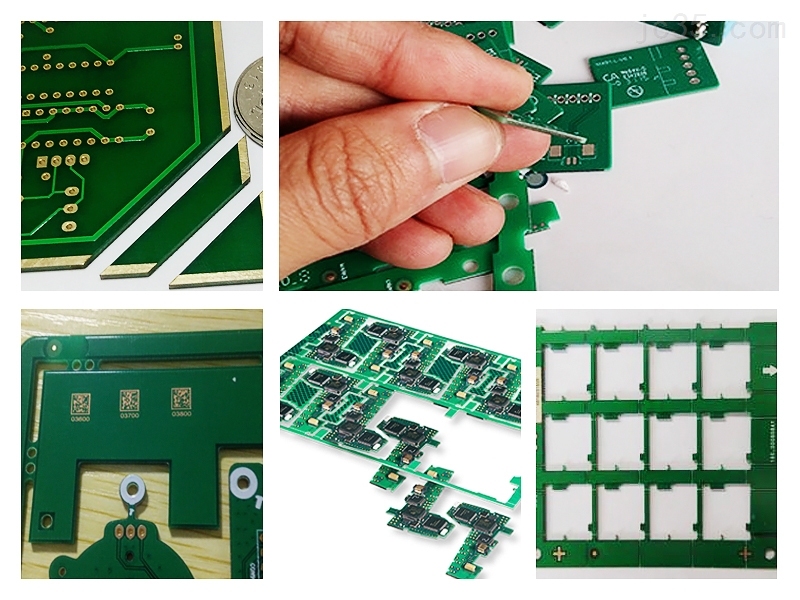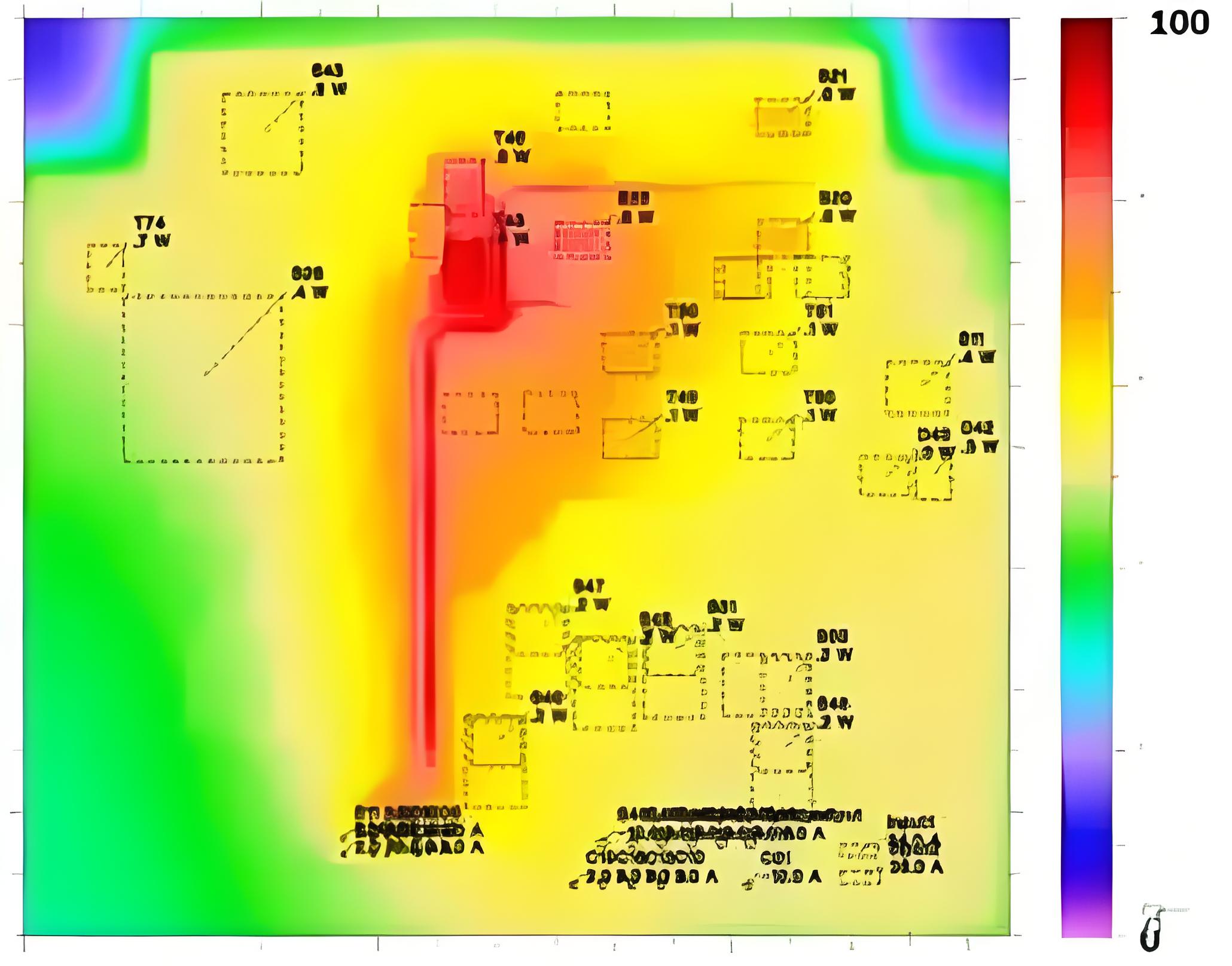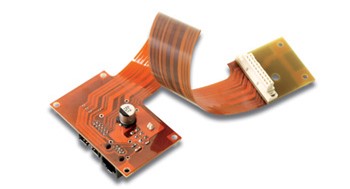Selecting the right material for your PCB prototype is a critical step in ensuring the success of your electronic design. Whether you're working on a high-frequency application, a thermally demanding project, or a flexible circuit, the substrate material can make or break your product's performance. In this comprehensive guide, we'll explore PCB prototype material selection, compare FR-4 vs. alternatives, and dive into specialized materials for high-frequency PCB materials, thermal management PCB materials, and flexible PCB substrates. By the end, you'll have the knowledge to choose the best substrate for your next project.
Why PCB Prototype Material Selection Matters
The substrate material in a printed circuit board (PCB) serves as the foundation for your components and circuitry. It impacts electrical performance, thermal dissipation, mechanical stability, and overall cost. A poor material choice can lead to signal loss in high-frequency designs, overheating in power-intensive applications, or mechanical failure in flexible circuits. Understanding the properties of different materials and matching them to your project’s needs is essential for a successful prototype.
In the following sections, we'll break down the most common and specialized PCB materials, helping you navigate the complexities of material selection with confidence.

FR-4: The Standard Choice for PCB Prototypes
FR-4 is the most widely used material for PCB prototypes due to its balance of cost, availability, and performance. Made from woven fiberglass and epoxy resin, FR-4 offers decent electrical insulation and mechanical strength, making it suitable for a wide range of applications.
Key Properties of FR-4
- Dielectric Constant (Dk): Approximately 4.5 at 1 MHz, which is acceptable for general-purpose designs but may cause signal issues at higher frequencies.
- Dissipation Factor (Df): Around 0.02, indicating moderate signal loss.
- Thermal Conductivity: Low, at about 0.3 W/m·K, which can be a limitation for heat-intensive applications.
- Cost: Highly affordable, often costing less than $1 per square inch for standard thicknesses (1.6mm).
Advantages of FR-4
FR-4 is a go-to material for beginners and professionals alike because it’s cost-effective and widely supported by PCB fabrication processes. It works well for low- to medium-frequency designs and general-purpose electronics like consumer gadgets and basic industrial controls.
Limitations of FR-4
While FR-4 is versatile, it falls short in specialized applications. Its dielectric properties degrade at frequencies above 1 GHz, leading to signal integrity issues. Additionally, its poor thermal conductivity makes it unsuitable for high-power designs where heat dissipation is critical.
FR-4 vs. Alternatives: When to Look Beyond the Standard
While FR-4 is a solid starting point, many projects demand materials with superior electrical, thermal, or mechanical properties. Let’s compare FR-4 to some common alternatives to help you decide when to upgrade your substrate choice.
1. High-Grade Laminates for Improved Performance
High-grade laminates, often based on advanced epoxy or resin systems, offer better dielectric properties than standard FR-4. These materials typically have a Dk of 3.5 to 4.0 and a lower Df of around 0.01, reducing signal loss in applications up to 5 GHz. They are slightly more expensive but still reasonable for many prototypes.
2. Polyimide for High-Temperature Stability
Polyimide materials are known for their ability to withstand extreme temperatures, often up to 260°C. They are a strong alternative to FR-4 in environments where thermal stress is a concern, such as automotive or aerospace applications. However, their cost can be 2-3 times higher than FR-4.
3. PTFE-Based Materials for High-Frequency Designs
For projects requiring excellent signal integrity at frequencies above 5 GHz, PTFE (polytetrafluoroethylene)-based materials are a top choice. With a Dk as low as 2.1 and a Df of 0.0009, they minimize signal loss and are ideal for RF and microwave applications. The trade-off is their high cost, often 5-10 times that of FR-4, and more complex fabrication requirements.
High-Frequency PCB Materials: Optimizing Signal Integrity
In high-frequency applications, such as 5G communications, radar systems, and wireless devices, signal integrity is paramount. The choice of substrate material directly affects impedance control, signal speed, and loss. Let’s explore the best high-frequency PCB materials for these designs.
Key Considerations for High-Frequency Materials
- Low Dielectric Constant (Dk): A lower Dk (closer to 2.0) ensures faster signal propagation. For instance, a material with a Dk of 2.2 can achieve signal speeds up to 70% of the speed of light in a vacuum.
- Low Dissipation Factor (Df): A Df below 0.001 reduces energy loss, critical for maintaining signal strength over long traces.
- Stable Properties: The material must maintain consistent Dk and Df across a range of frequencies and temperatures.
Top High-Frequency Materials
Besides PTFE-based laminates, other options include ceramic-filled hydrocarbon materials and specialized low-loss laminates. These materials can support frequencies up to 20 GHz or higher, with controlled impedance values typically within ±10% of the target (e.g., 50 ohms for RF designs). They are ideal for applications where every nanosecond of signal delay matters.
Trade-Offs
High-frequency materials often come with higher costs and may require specialized manufacturing processes, such as tighter tolerances for trace widths and spacing. However, the investment is worth it for applications where performance cannot be compromised.
Thermal Management PCB Materials: Keeping Your Design Cool
Heat dissipation is a major concern in power electronics, LED lighting, and high-performance computing. Choosing the right thermal management PCB materials can prevent overheating, extend component lifespan, and improve reliability.
Key Properties for Thermal Management
- Thermal Conductivity: Measured in W/m·K, higher values (e.g., 1.0 or above) indicate better heat transfer away from components.
- Coefficient of Thermal Expansion (CTE): A lower CTE (e.g., 10-20 ppm/°C) reduces stress on components during temperature changes.
- Heat Resistance: The material should withstand operating temperatures without degrading.
Popular Materials for Thermal Management
Metal-core PCBs, often made with an aluminum or copper base, offer thermal conductivity values of 1.0 to 2.0 W/m·K, far superior to FR-4’s 0.3 W/m·K. Ceramic substrates are another excellent option, with thermal conductivity as high as 20 W/m·K, though they are significantly more expensive and brittle.
For less extreme needs, high-Tg (glass transition temperature) FR-4 variants can handle temperatures up to 170°C, compared to standard FR-4’s limit of around 130°C. These are often a cost-effective middle ground for moderate thermal demands.

Flexible PCB Substrates: Adapting to Unique Designs
Flexible PCBs are increasingly popular in wearable devices, medical equipment, and compact electronics where space and shape are constraints. Selecting the right flexible PCB substrate ensures durability and performance in dynamic environments.
Key Properties of Flexible Substrates
- Bendability: The material must withstand repeated flexing without cracking. Typical bend radii for flexible substrates are as low as 0.5mm.
- Lightweight: Flexible materials are often thinner (e.g., 0.1mm to 0.3mm) and lighter than rigid substrates.
- Thermal and Electrical Stability: Even in flexible designs, the material must maintain reliable performance under varying conditions.
Common Flexible Materials
Polyimide is the most common substrate for flexible PCBs due to its excellent flexibility and heat resistance (up to 260°C). It can be used in single-layer or multilayer designs, supporting complex circuits in tight spaces. Another option is polyester, which is cheaper but less durable and suited for simpler, less demanding applications.
Applications and Challenges
Flexible substrates enable innovative designs, such as foldable displays or wearable sensors. However, they are more expensive than rigid materials and require careful design to avoid stress points that could lead to failure over time.

How to Choose the Right PCB Prototype Material
Selecting the ideal substrate for your PCB prototype involves balancing performance requirements with budget constraints. Here are the key steps to guide your decision:
- Define Your Application Needs: Determine the electrical, thermal, and mechanical demands of your project. For example, does your design operate at 10 GHz, requiring low-loss materials, or is it a power circuit needing high thermal conductivity?
- Consider Frequency Range: Use FR-4 for low-frequency designs (below 1 GHz), but opt for high-frequency materials if your signals exceed this threshold.
- Evaluate Thermal Loads: Assess the heat generated by your components. If temperatures exceed 130°C, consider high-Tg materials or metal-core substrates.
- Factor in Flexibility: If your design requires bending or fitting into irregular shapes, prioritize flexible substrates like polyimide.
- Budget Constraints: High-performance materials come at a premium. Weigh the cost against the benefits to ensure your prototype remains feasible.
Practical Tips for PCB Prototype Material Selection
Beyond the basics, here are some actionable tips to refine your material choice:
- Work closely with your fabrication partner to confirm material availability and compatibility with their processes.
- Request material datasheets to verify properties like Dk, Df, and CTE before finalizing your choice.
- Start with small batches of prototypes to test material performance under real-world conditions before scaling up.
- For mixed requirements (e.g., high-frequency and thermal needs), consider hybrid stackups that combine different materials in a single board.
Conclusion: Make Informed Decisions for Your PCB Prototypes
Choosing the right substrate material for your PCB prototype is a decision that shapes the performance, reliability, and cost of your final product. Whether you stick with the versatile FR-4, explore FR-4 vs. alternatives for enhanced capabilities, or dive into specialized options like high-frequency PCB materials, thermal management PCB materials, or flexible PCB substrates, understanding your project’s unique needs is the key to success.
At ALLPCB, we're committed to supporting your journey from prototype to production with expert guidance and high-quality materials. Use this guide as your roadmap to navigate the complexities of PCB prototype material selection and build designs that stand out in performance and reliability.
 ALLPCB
ALLPCB







